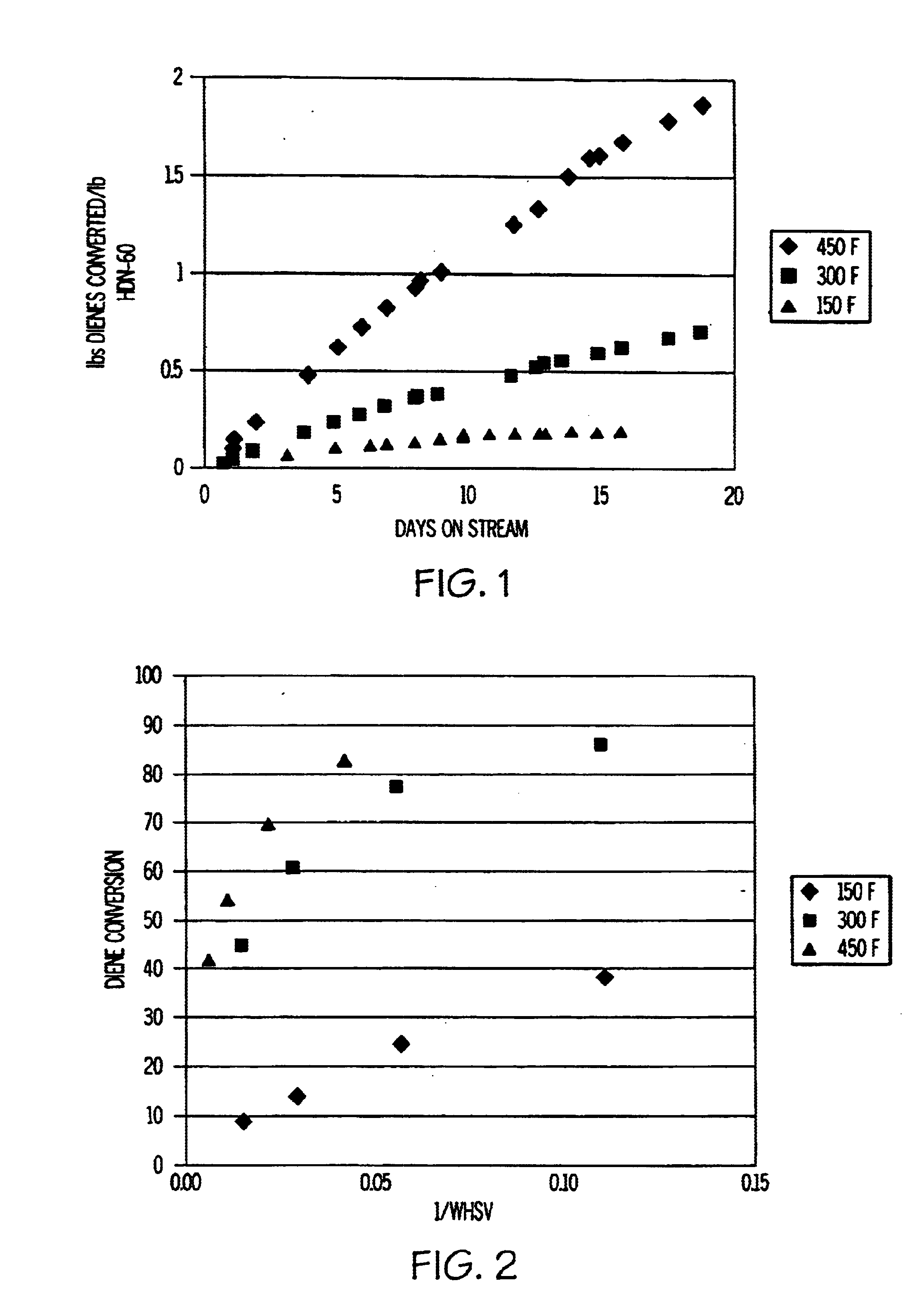Conversion of unsaturated chemicals to oligomers
- Summary
- Abstract
- Description
- Claims
- Application Information
AI Technical Summary
Benefits of technology
Problems solved by technology
Method used
Image
Examples
example 1
[0034]In this example, the feedstock was a C7+ cut of full-range cyclic catalytic reformer (“CCR”) reformate containing 47 wt % toluene, 43 wt % C8 aromatics, 9 wt % C9+ aromatics, and 0.25 wt % olefins. No dienes were detected in this feed using standard GC analysis. This feedstock was processed at 1 WHSV over HDN-60 at 464° F. and 200 psig 90% olefin conversion was observed. After two days on stream, olefin conversion activity still remained above 85%, indicating sufficient stability to achieve monthly cycles in a swing-bed operation by judicious choice of WHSV.
example 2
[0035]For this example, a light aromatics extract containing 65 wt % benzene and 33 wt % toluene was used as the feedstock. This feedstock had a BI of about 160 and contained about 80 ppm of cyclopentadiene, 160 ppm of mixed methylcyclopentadienes, and 250 ppm of olefins. The feedstock was contacted with the HDN-60 catalyst at 16 WHSV, 392° F. and 200 psig. The fresh catalyst converted 66% of the methylcyclopentadienes to oligomers at the start of the run. After two weeks on stream, the conversion dropped in half to 33% indicating an aging rate of 12.5° F. / week at 16 WHSV. A review of all the olefin peaks indicated that out of 20-odd resolved olefin peaks only two underwent measurable conversions of <20%. Based on the much higher reactivity of dienes vs. olefins, the hydrotreating catalyst showed excellent selectivity for diene vs. olefin conversion. By adjusting the WHSV to achieve maximum diene conversion based on the composition of the feedstock, HDN-60 can be used for fixed-bed ...
example 3
[0036]A feedstock comprising 1 wt % thiophene, 10 wt % 1-octene, 44 wt % heptane, and 55 wt % toluene was used for this example. A commercial hydrotreating catalyst (HDN-60 NiMo oxide / alumina, precalcined in air at 400° C.) in the ratio of 0.1 gm of catalyst for each 1 gm of feedstock was added to an autoclave in nitrogen which was filled half full. The autoclave was sealed and brought to 400° F. for 20 hours. The autoclave was cooled and opened. No significant amount of gases were produced. The liquid product was analyzed by GC and showed that more than 95% of both the thiophene and octene had been converted to oligomers.
PUM
 Login to View More
Login to View More Abstract
Description
Claims
Application Information
 Login to View More
Login to View More - R&D
- Intellectual Property
- Life Sciences
- Materials
- Tech Scout
- Unparalleled Data Quality
- Higher Quality Content
- 60% Fewer Hallucinations
Browse by: Latest US Patents, China's latest patents, Technical Efficacy Thesaurus, Application Domain, Technology Topic, Popular Technical Reports.
© 2025 PatSnap. All rights reserved.Legal|Privacy policy|Modern Slavery Act Transparency Statement|Sitemap|About US| Contact US: help@patsnap.com


